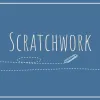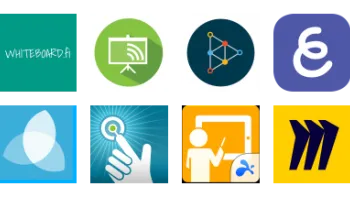Take a look inside 6 images
Scratchwork
Pros: A slick, collaborative interface brings together writing, math, and videoconferencing in a powerful way.
Cons: The selection tool can be a bit finicky, and the interface takes time to get used to.
Bottom Line: This flexible tool is great for student groups to upload, manipulate, and share math projects.
Scratchwork acts both as a teaching assistant for teachers and tutors and as a workspace for students collaborating on projects. Educators and students can manipulate equations themselves and receive immediate feedback from others involved. Students can work together on collaborative projects and then export or share the board and work with others. Students can also use the boards on their own to create dynamic, easy-to-read works for sharing either electronically or in print (via the PDF export feature).
The way Scratchwork is set up makes it really flexible for students to create collaborative or individual works and then share them either as a final project for grades (where the teacher can annotate directly onto the board or onto a printed copy) or for the teacher to provide ongoing feedback on projects, assignments, or other activities. It would also be an incredible tool for connecting with students from other classrooms or schools, or even from other countries.
Scratchwork combines the power of an online whiteboard with tools such as audio-/videoconferencing, a collaborative workspace with the ability to invite multiple editors to work on a single board, and math recognition software. The platform doesn't require any special software as it's all browser-based, which means students and teachers can use it both within and outside of school hours to work on projects together. Scratchwork is also smart enough to recognize math from photos, hand-drawn equations inside the software, or even LaTeX commands. This gives students and teachers the flexibility to use the tool without having to learn any special formats or commands (aside from basic LaTeX if they choose).
The different plans (including the free options) allow users to access a wide variety of tools for creation, annotation, and collaboration. The main differences between the free and paid plans are limited mostly to the number of boards (four versus unlimited), storage (100 MB versus 500 MB), and the number of collaborators (three versus five). No matter what plan is chosen, most of the tools are there; it seems the paid plan has access to more complicated LaTeX commands, but most middle and high school students wouldn't use them anyway.
For writing and presenting math, Scratchwork does an amazing job. However, it's a tool only for presentation and collaboration. The platform doesn't provide any instruction in math concepts or help beyond the basics of how to use it. Therefore, it works really well as a supplement to classroom instruction or as a way for students to work on projects together. It also provides teachers with a new way to interact with their students; teachers can create various boards to share with their class, break students up into groups, or provide feedback in a fun and creative way. Even with a finicky selection tool and an interface that will take getting used to, Scratchwork works quite well as an innovative addition to the classroom that can assist with math learning in a variety of ways.














